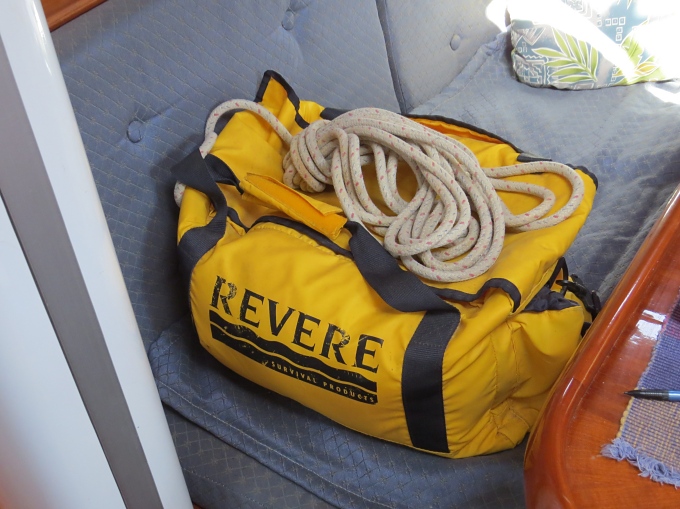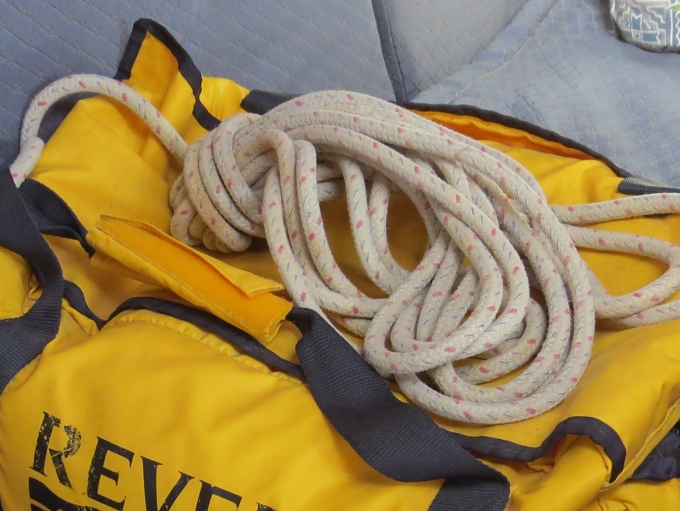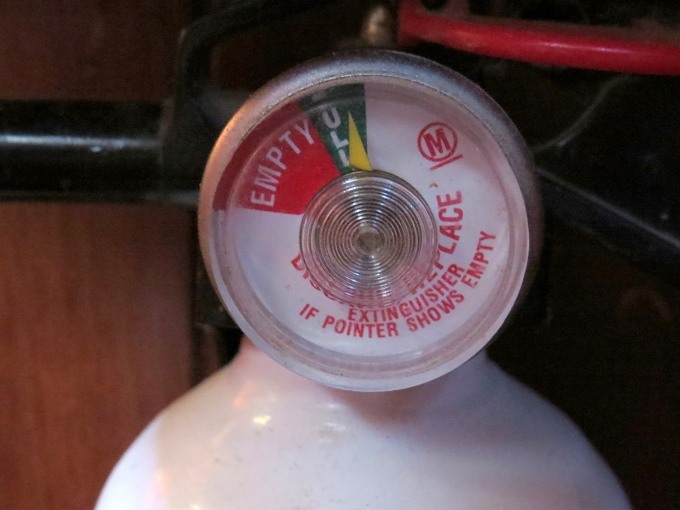Ditch Bag Inspection
/Once a year, usually at the beginning of our cruising season, I inspect our “ditch bag”, the bag we'd grab if we ever had to abandon ship for any reason. We're starting the countdown till we leave Port Adelaide and so it's inspection time. Our Revere Survival Products ditch bag has been on the boat for nearly a decade and when we're at sea, it sits nestled on the saloon settee ready to be grabbed if the need occurs. Thankfully, we've never had to use it.
The ditch bag itself is made of waterproof material, the seams are waterproofed and the zipper is water resistant. Despite that, everything in it that is supposed to be kept dry is kept in a drybag or ziploc bag. Revere's newest design bag has an external pouch for an EPIRB and lots of inner net pockets for stowage of smaller items. It is buoyant to 40 lbs/18 kg loaded capacity, i.e. it will float when it's all loaded up. Though it would be nice to include everything you could possibly need if you abandoned ship in this one tidy package, it's just not possible, so the selection of contents has to be whittled down to a manageable size to fit into the bag.
My goal each year is to unpack the bag, review its contents, make sure everything works and has current dating and then repack it again, hoping we'll never have to use it. I unpack the GPS, for instance, put in fresh batteries and turn it on. It works. I remove the batteries, close it up, include a pack of fresh batteries, make sure the little screwdriver is with it (also used for the VHF for getting into the battery compartment) and repackage in its dry bag … hopefully till next year. I do the same with the VHF. I un-pickle the handheld manual watermaker, make some fresh water from sea water, re-pickle it and pack it away. I check dating on the few meds we carry in our mini-med kit. I insure that copies of our passports and boat docs are current. I make sure we haven't “borrowed” anything from the bag since the last time I inspected it and then forgotten to return it. I consult an inspection list we have, just to make sure I don't forget anything and then update it if we change anything. We try not to leave safety checks to random memory recalls … or lapses. The ditch bag inspection goes on our calendar as a to-do item every year.
From time to time over the years, we've upgraded or replaced things in the bag. We switched to a wind-up LED flashlight, for instance, instead of a battery-operated one, to eliminate the need for carrying extra batteries. We added a mini-fishing kit at one point and a space/survival blanket that's silver on one side and orange on the other, figuring the orange would serve as a make-do distress flag in case of emergency. We attached a long rope tether to the handle of the bag, so it would be easier to tow, if needed, or we could tie it to the side of the dinghy, or boat or life raft or whatever, if we had to.
Because this is an annual safety check, we decided that whenever we do the ditch bag inspection, we'd do other safety checks as well. And so, I've just completed an inspection of our five fire extinguishers aboard to make sure they're all full and ready for action. This is also a good reminder of exactly where they are in case they're ever needed. Our PFD inflation cartridges, bobbins and strobe batteries are in date and the PFDs are hanging on hooks in the wet locker, easily accessible. The life raft has been scheduled for re-certification before we leave Port Adelaide.
There have been several articles written over the years as to what individuals consider the essentials for a ditch bag. If you'd like our list of contents, leave a comment or send an email and we'll gladly send it to you.
Please note: We carry other safety equipment aboard, e.g. lots more flares, a horn, SOS strobe, etc. and there is additional safety equipment stowed inside the liferaft. This blog post provides an overview of the actual contents of the ditch bag itself.






